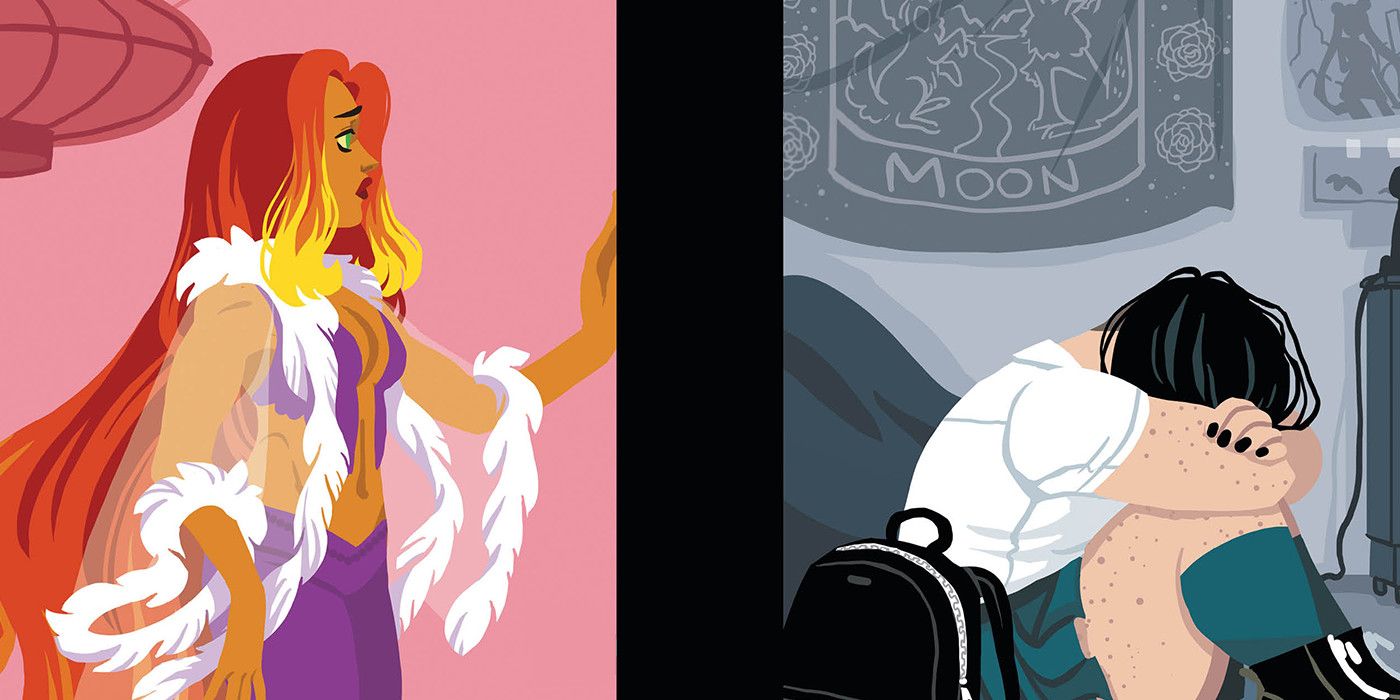

When Starfire’s sister Blackfire abducts both of them and forces Mandy to fight her to the death for the throne of Tamaran, Mandy and Starfire are forced to rely on each other and manage to work out their issues with each other. Mandy and Starfire care for each other a great deal, but, like so many teenage daughters and their mothers, they have a rocky relationship. Accordingly, the focus of the graphic novel is on this relationship and the conflict between mother and daughter. However, as the title of the graphic novel suggests, it is her relationship with her mother and her alien heritage in general that she struggles with the most.
#Starfire daughter plus#
Many factors contribute to Mandy’s sense of herself as an outcast: her lesbianism, her plus size body, her goth fashion style. She couldn’t stand to see her mother even more disappointed in her than she already is. Of course, she doesn’t tell her mother this. She is so afraid of failure that she walks out of her SATs, hoping to move to France instead of going to college.

Mandy possesses none of these things, and she feels inadequate in comparison. Everything seems to come so easy to Starfire sure, she fights epic space battles to save the world every day, but she has superpowers and confidence and the admiration of everyone around her. She feels immense pressure to live up to her mother’s example. Mandy feels a desperate need to express her own unique identity and distance herself from her mother and her alien heritage. The graphic novel opens with Mandy reapplying black dye to her hair to cover up the fiery orange roots she inherited from her mother. As a son of Vietnamese immigrants, Lincoln can relate to Mandy’s struggles with fitting in. Her best friend Lincoln is the only person who isn’t more interested in her mom than her. Her classmates approach her often, but only to ask about Starfire’s recent missions and try to determine whether Mandy secretly has superpowers (she doesn’t). Since childhood, the public has known her as Starfire’s daughter, the offspring of a beautiful alien superhero and some unknown human. Nearly seventeen, Mandy Anders understands exactly what makes her different from the people around her – at least, she thinks she does. But I was surprised to find that this story resonated not only with the lesbian aspect of my identity, but also with the part of me that is a daughter of immigrants. As I predicted, I did find the story very relatable. Yoshitani’s colors, costumes, and backgrounds greatly contribute to the story’s themes, and Aditya Bidikar’s letters are expertly done. Yoshi Yoshitani’s lineless art and vivid colors are simply spectacular, conveying personality and mood in a way that is not just effective storytelling but also pleasing to look at.

Tamaki excels at writing teenagers who sound like actual teenagers, and her depiction of the central mother/daughter relationship feels authentic and nuanced. When I read the book, I loved it even more than I had expected. I predicted I would find parts of it relatable as someone who was once a misfit lesbian in high school. When I Am Not Starfire was announced as part of DC’s young adult graphic novel imprint, I was excited about it for a lot of reasons: I adore Mariko Tamaki’s writing, I love Starfire, and I enjoy stories about young lesbians. Here’s her first piece on I Am Not Starfire.

#Starfire daughter free#
Priya Saxena spends most of her free time reading comic books and overanalyzing pop culture.


 0 kommentar(er)
0 kommentar(er)
